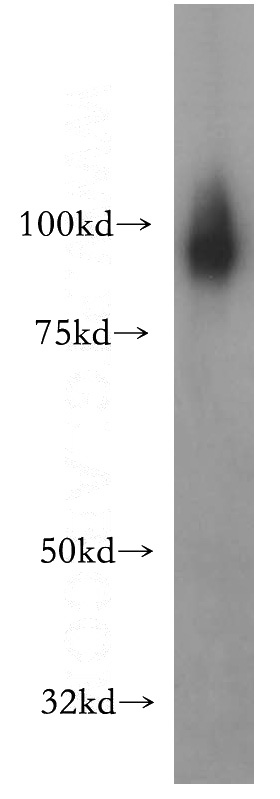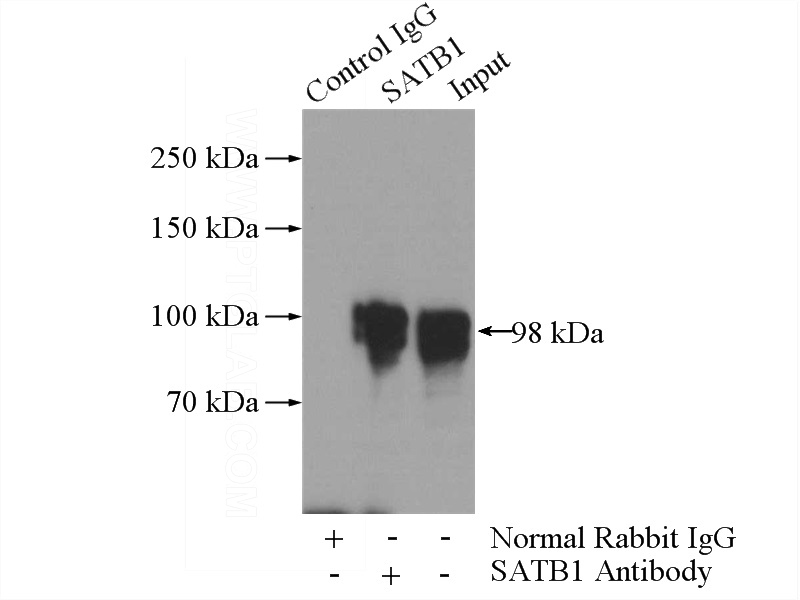-
Product Name
SATB1 antibody
- Documents
-
Description
SATB1 Rabbit Polyclonal antibody. Positive IP detected in HEK-293 cells. Positive WB detected in human brain tissue, HEK-293 cells. Observed molecular weight by Western-blot: 98kd
-
Tested applications
ELISA, WB, IP
-
Species reactivity
Human,Mouse,Rat; other species not tested.
-
Alternative names
DNA binding protein SATB1 antibody; SATB homeobox 1 antibody; SATB1 antibody
-
Isotype
Rabbit IgG
-
Preparation
This antibody was obtained by immunization of SATB1 recombinant protein (Accession Number: NM_001322875). Purification method: Antigen affinity purified.
-
Clonality
Polyclonal
-
Formulation
PBS with 0.02% sodium azide and 50% glycerol pH 7.3.
-
Storage instructions
Store at -20℃. DO NOT ALIQUOT
-
Applications
Recommended Dilution:
WB: 1:1000-1:10000
IP: 1:200-1:2000
-
Validations

human brain tissue were subjected to SDS PAGE followed by western blot with Catalog No:114977(SATB1 antibody) at dilution of 1:4000

IP Result of anti-SATB1 (IP:Catalog No:114977, 4ug; Detection:Catalog No:114977 1:500) with HEK-293 cells lysate 2000ug.
-
Background
Epigenetic modifications and dynamic changes in chromatin organization by organizer proteins have recently been shown to play an instrumental role in regulating cancer-promoting genes. Special AT-rich binding protein (SATB1) is a unique type of global regulator that integrates higher-order chromatin organization -withregulation of gene expression. [PMID:23076250,22998183,23121661] SATB1 is a T cell-enriched transcription factor and a chromatin organizer essential for controlling genes that participate in T-cell development and activation. It regulates gene expression by periodically anchoring matrix attachment regions to the nuclear matrix and directly recruiting chromatin-modifying factors. Depending on its posttranslational modifications, SATB1 activates or represses multiple genes.Its expression is regulated by interleukin-4 (IL4) during T helper-2(Th2) cell differentiation[PMID: 20522714].
-
References
- Ye CS, Zhou DN, Yang QQ, Deng YF. Silencing SATB1 influences cell invasion, migration, proliferation, and drug resistance in nasopharyngeal carcinoma. International journal of clinical and experimental pathology. 7(3):914-22. 2014.
Related Products / Services
Please note: All products are "FOR RESEARCH USE ONLY AND ARE NOT INTENDED FOR DIAGNOSTIC OR THERAPEUTIC USE"
